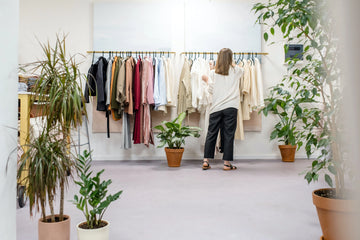In recent years, the fashion industry has faced growing scrutiny over its environmental impact, prompting a shift towards more sustainable practices. At the heart of this transformation is design. The role of design in creating sustainable fashion is multifaceted, encompassing material selection, production processes, longevity, and aesthetics. By reimagining design principles, the fashion industry can significantly reduce its ecological footprint and foster a culture of sustainability.
Why is Design for Sustainability Important?
Design for sustainability is crucial because it addresses the root causes of environmental degradation and social inequality within the fashion industry. By integrating sustainability into the design process, designers can:
-
Reduce Environmental Impact: The fashion industry is one of the largest polluters, responsible for significant water consumption, chemical use, and waste generation. Sustainable design mitigates these impacts by choosing eco-friendly materials and production methods.
-
Promote Ethical Practices: Sustainable design often includes fair labor practices and ethical sourcing, ensuring that workers are treated fairly and work in safe conditions. This helps address social issues associated with fast fashion, such as exploitation and poor working conditions.
-
Encourage Conscious Consumption: By creating durable, timeless pieces, sustainable design discourages the throwaway culture promoted by fast fashion. This shift encourages consumers to buy less, choose quality over quantity, and value their clothing more.
-
Innovate for the Future: Sustainable design drives innovation by pushing for new materials and technologies that are less harmful to the environment. This can lead to breakthroughs that benefit not just the fashion industry, but other sectors as well.
Material Selection
One of the most critical aspects of sustainable fashion design is the choice of materials. Traditional textiles such as cotton and polyester have significant environmental drawbacks, including high water usage and pollution from chemical treatments. Sustainable design prioritizes eco-friendly materials like organic cotton, bamboo, hemp, and recycled fabrics. For example, organic cotton is grown without harmful pesticides and requires less water compared to conventional cotton . Designers are also exploring innovative materials such as Piñatex (made from pineapple leaf fibers) and Mylo (a leather alternative made from mycelium, the root structure of mushrooms)
Efficient Production Processes
Designers can also influence sustainability through production processes. Sustainable design promotes methods that minimize waste and energy consumption. Zero-waste pattern cutting is one such technique, where patterns are designed to use the entire fabric, leaving no scraps. Additionally, 3D printing and on-demand production help reduce excess inventory and waste . By integrating these methods, designers can significantly decrease the environmental impact of manufacturing.
Durability and Longevity
Creating durable, long-lasting garments is another essential aspect of sustainable fashion design. Fast fashion is notorious for producing low-quality items that quickly fall apart, leading to more waste as consumers frequently replace their wardrobes. Sustainable design, on the other hand, focuses on craftsmanship and quality, ensuring that clothing withstands the test of time. This approach not only reduces waste but also encourages consumers to value and care for their clothing
Aesthetics and Timelessness
The aesthetics of sustainable fashion also play a crucial role. Designers are moving away from fast fashion trends that change rapidly and encourage disposable clothing. Instead, they are creating timeless pieces that remain stylish regardless of current trends. By focusing on classic designs, sustainable fashion can help reduce the cycle of constant consumption and disposal . Moreover, designers are increasingly incorporating cultural and traditional elements into their work, promoting a deeper connection between the wearer and the garment.
Educating Consumers
Another vital aspect of sustainable fashion design is educating consumers. Designers can use their platforms to inform the public about the benefits of sustainable fashion and the impact of their choices. Transparent communication about the sourcing of materials, the conditions under which garments are made, and the overall lifecycle of a product can empower consumers to make more informed decisions. Brands like Patagonia and Stella McCartney are leading examples of how transparency and consumer education can be integrated into design and marketing strategies.
Collaboration and Innovation
Collaboration and innovation are also key drivers in sustainable fashion design. Designers are increasingly working with scientists, engineers, and sustainability experts to develop new materials and methods. Collaborative initiatives, such as the Ellen MacArthur Foundation’s Circular Fibres Initiative, aim to redesign the future of fashion by promoting circular economy principles, where products are designed to be reused, repaired, or recycled . Such collaborations are essential for driving the industry towards more sustainable practices.
Conclusion
The importance of design in creating sustainable fashion cannot be overstated. By prioritizing eco-friendly materials, efficient production processes, durability, timeless aesthetics, consumer education, and collaboration, designers have the power to reshape the fashion industry into a more sustainable and ethical sector. As consumers become more conscious of their environmental impact, the demand for sustainable fashion will continue to grow, making the role of design even more pivotal in the years to come.
References:
-
Textile Exchange. (2020). Organic Cotton Market Report. Retrieved from textileexchange.org
-
Ananas Anam. (2021). Piñatex: The Innovative Pineapple Leather. Retrieved from ananas-anam.com
-
Bolt Threads. (2021). Mylo: A Sustainable Alternative to Leather. Retrieved from boltthreads.com
-
McKinsey & Company. (2020). Fashion on Demand: How 3D Printing is Changing the Fashion Industry. Retrieved from mckinsey.com
-
Ellen MacArthur Foundation. (2021). Circular Fashion: Designing for Longevity. Retrieved from ellenmacarthurfoundation.org
-
Vogue. (2020). The Rise of Timeless Fashion: How Designers are Shifting Away from Trends. Retrieved from vogue.com
-
Patagonia. (2021). The Footprint Chronicles. Retrieved from patagonia.com
-
Stella McCartney. (2021). Sustainability: Our Mission. Retrieved from stellamccartney.com
-
Ellen MacArthur Foundation. (2021). Circular Fibres Initiative. Retrieved from ellenmacarthurfoundation.org





